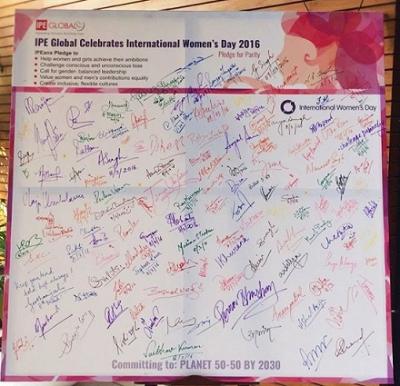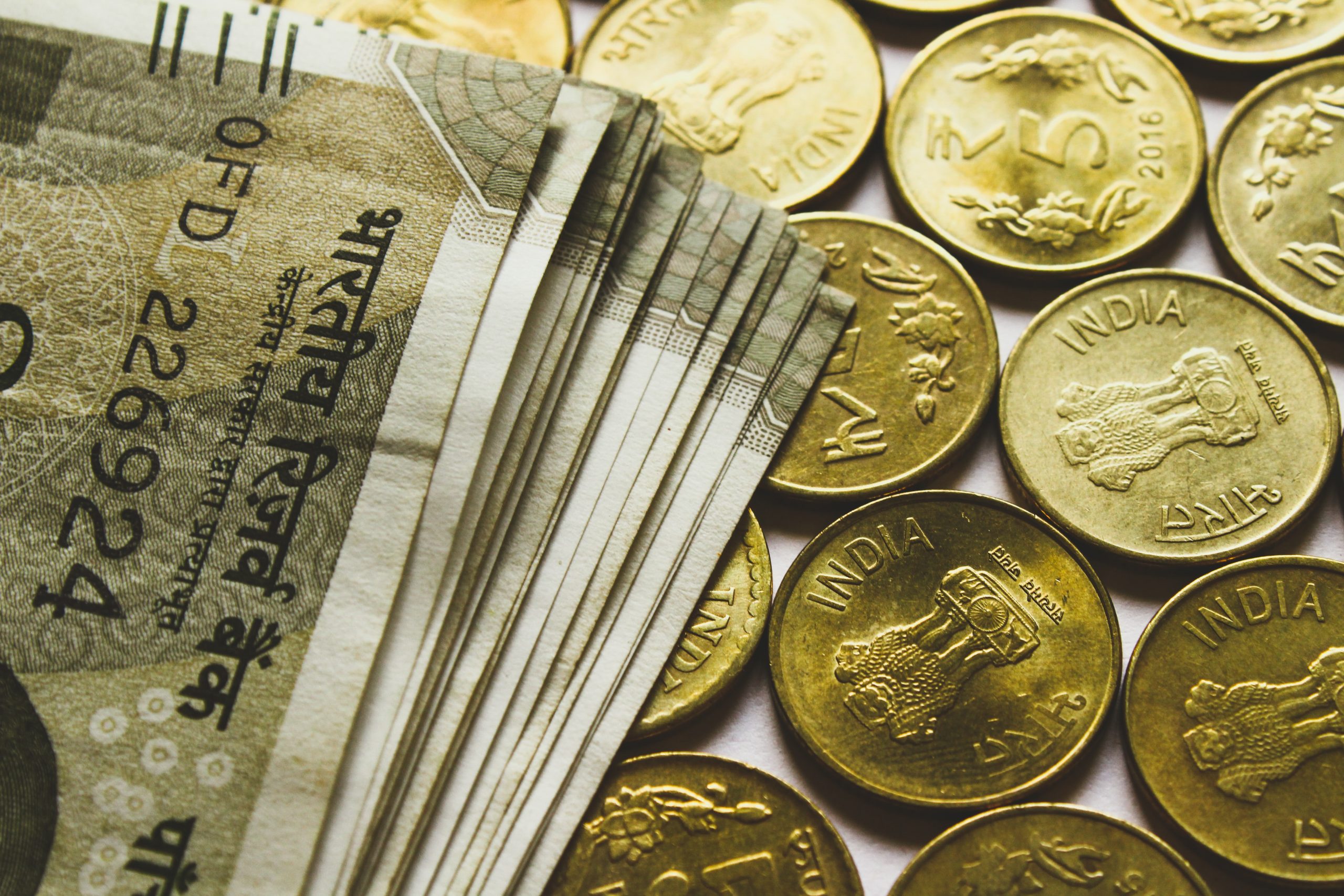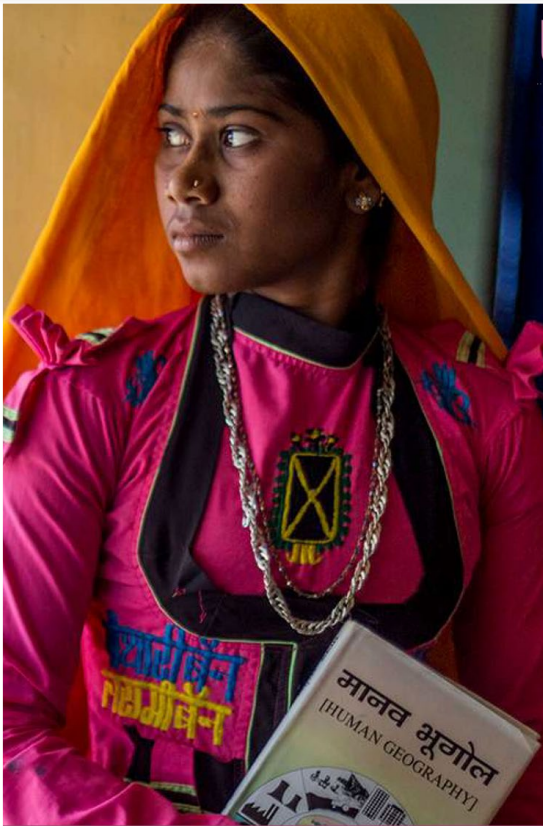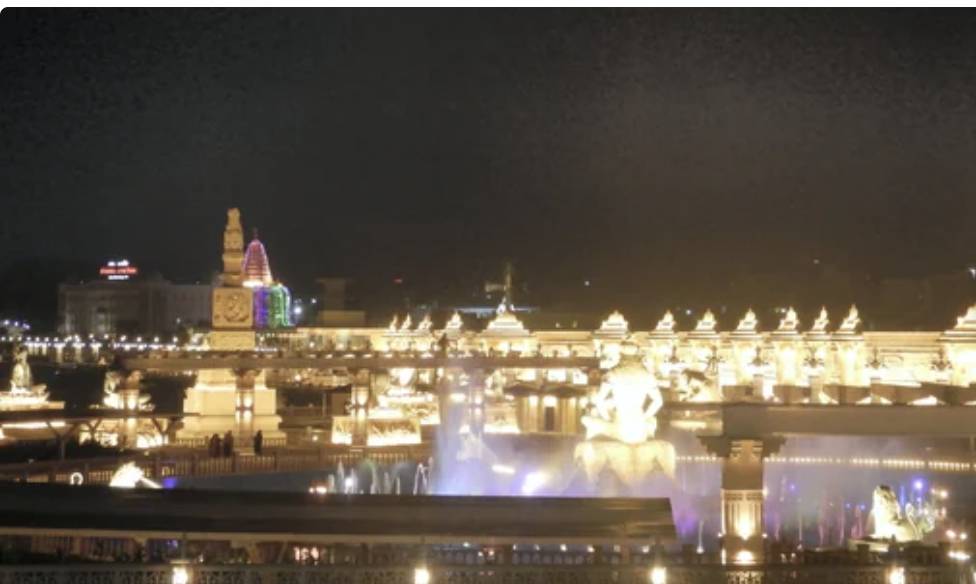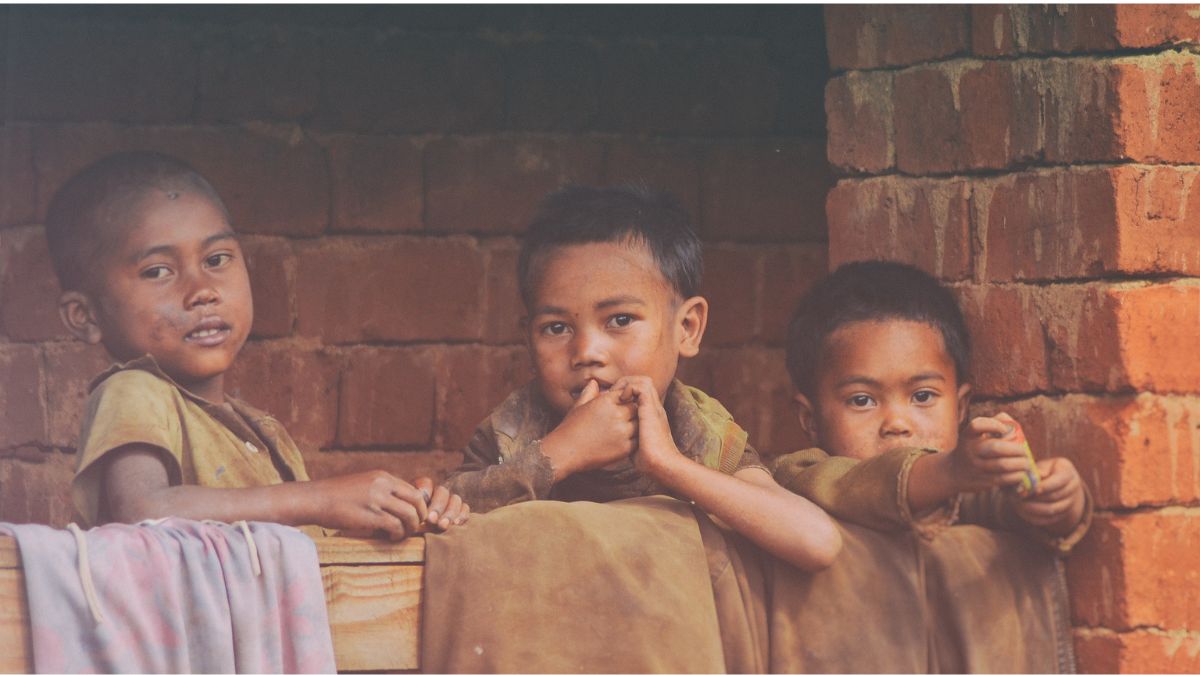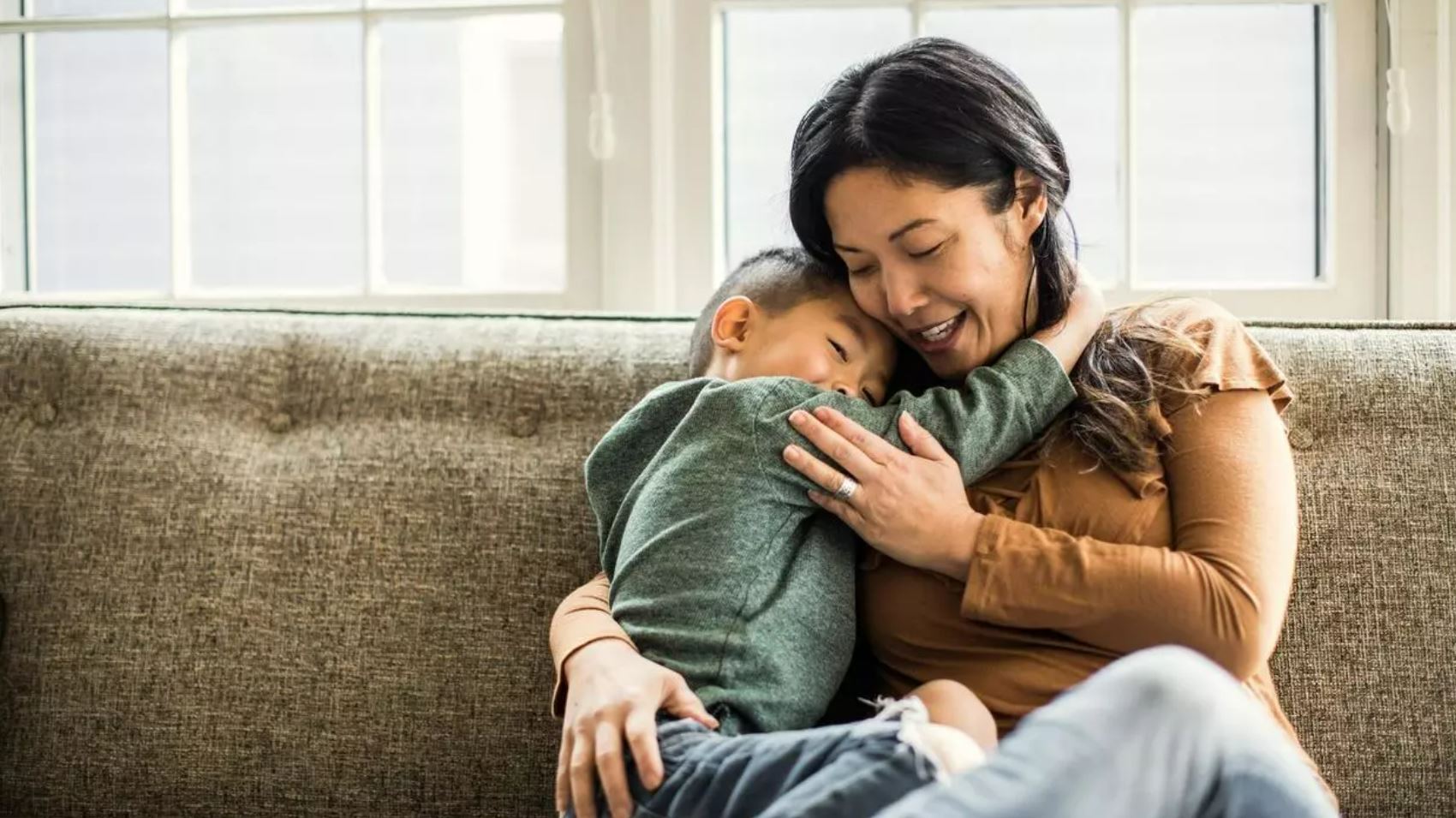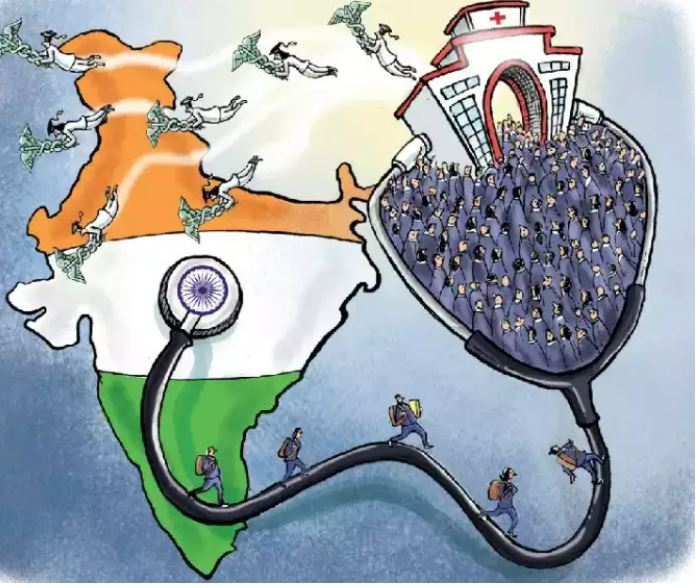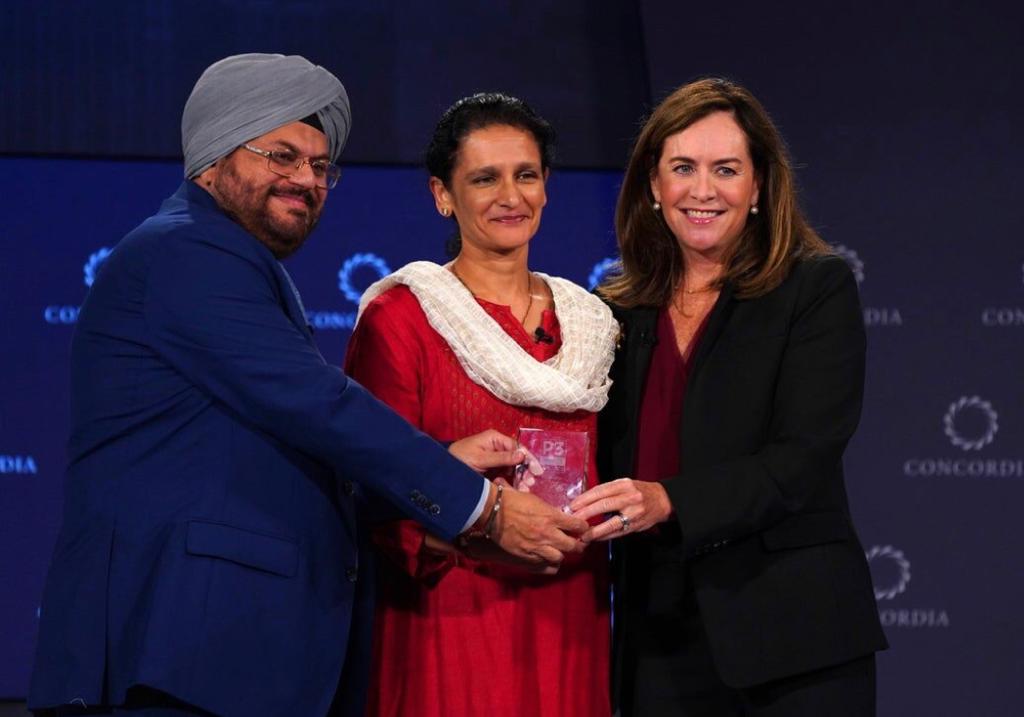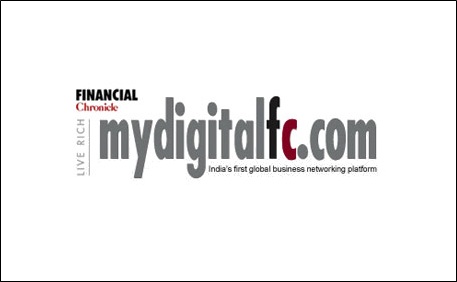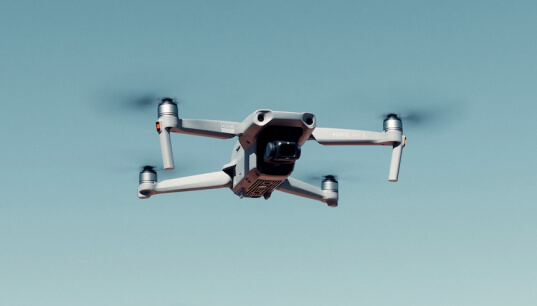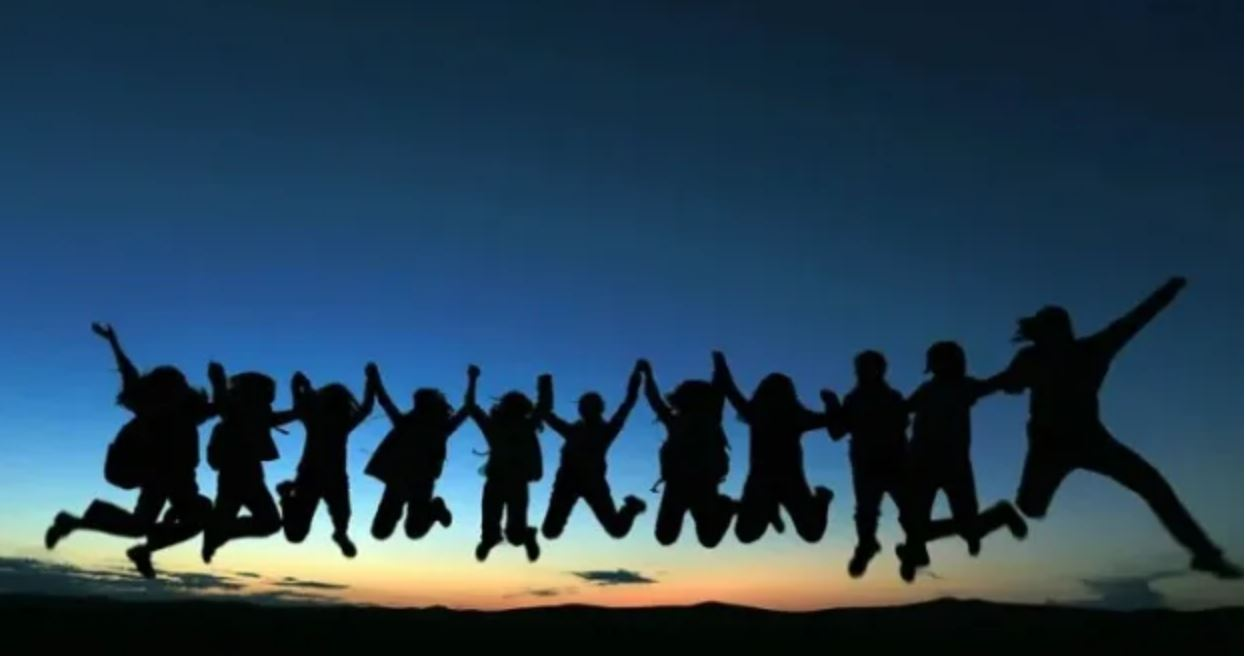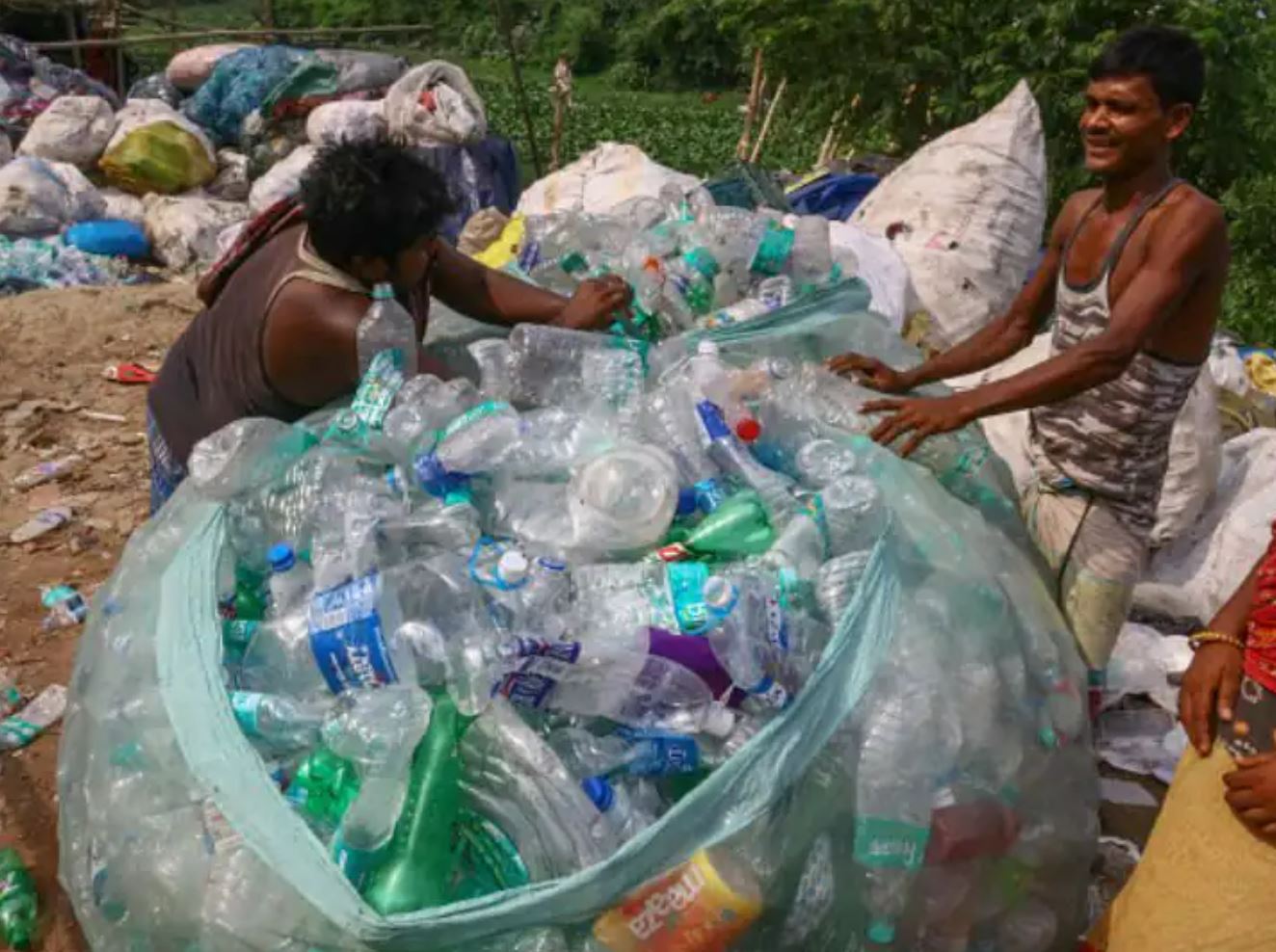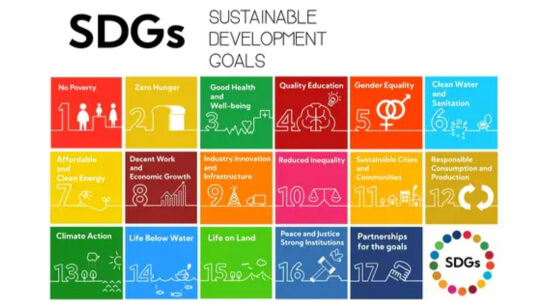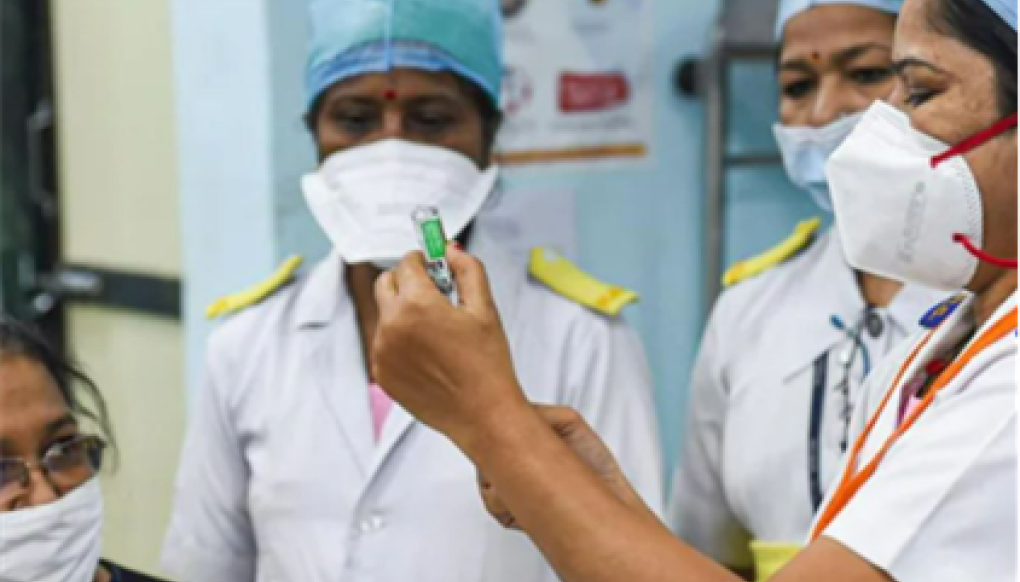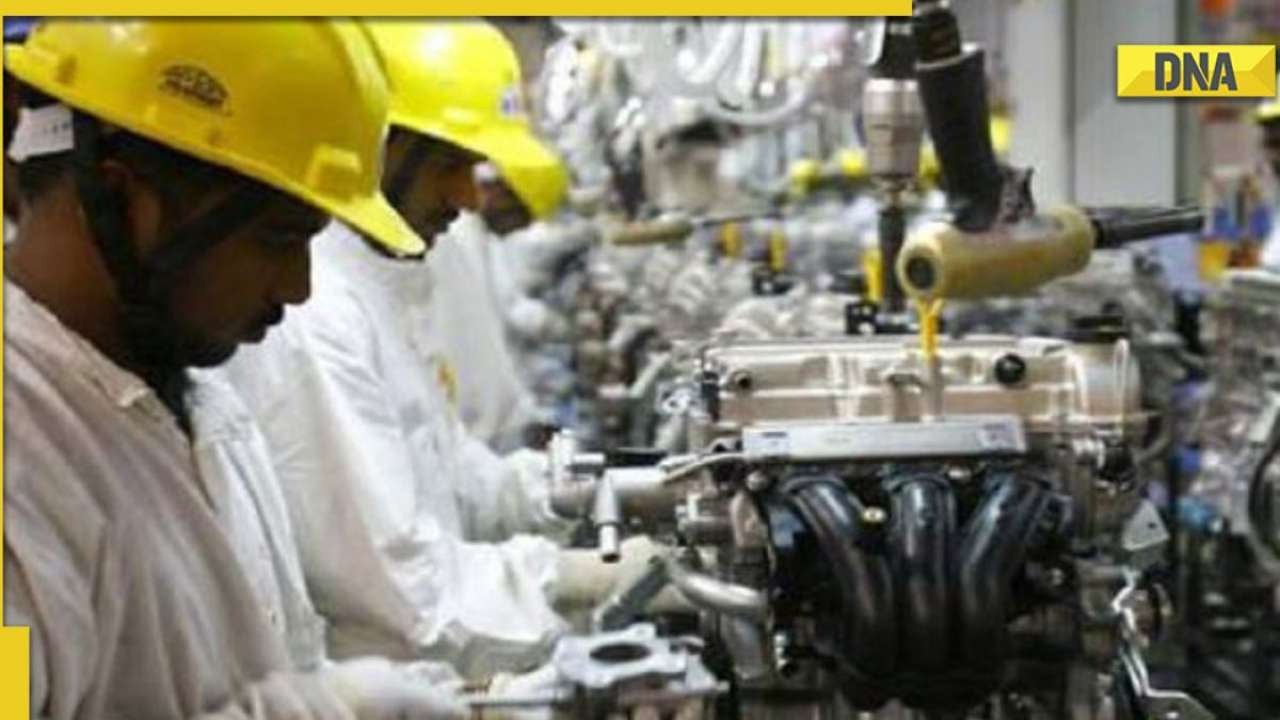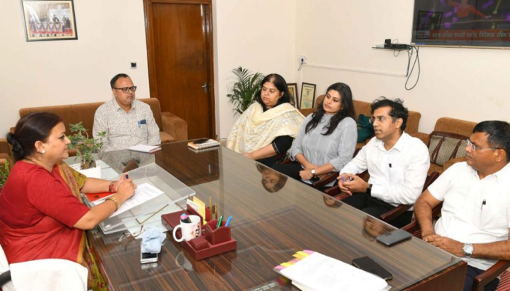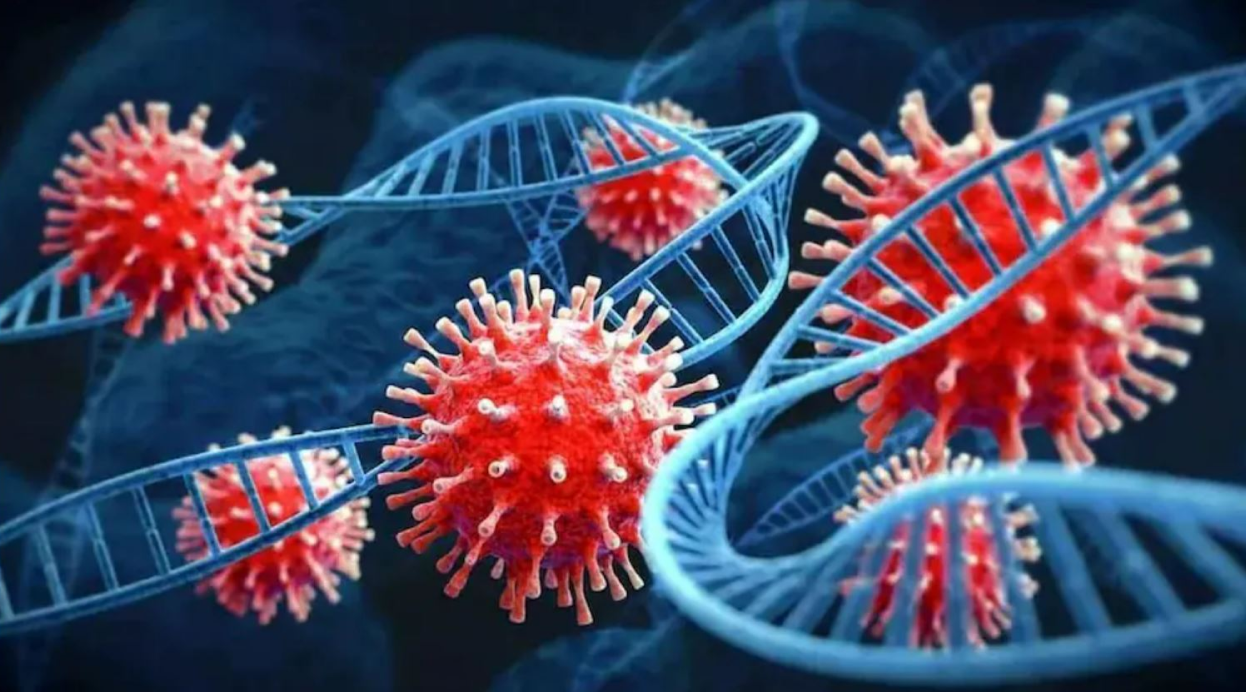The World Economic Forum predicted in 2014 that it would take until 2095 to achieve global gender parity. In 2015, they estimated that a slowdown of progress meant the gender gap wouldn’t close entirely until 2133. The theme for this year’s International Women’s Day – Pledge for Parity – called on men and women to pledge to take a concrete step to help achieve gender parity more qucikly.
Here, Dr. Indira Khurana, Policy Lead – Resource Scarcity, Food Security & Climate Change, IPE Global, reflects on Pledge for Parity. Citing the example being set by rural women in India, she asks if we will really need to wait till the next century to close the gender gap?
IPE Global staff signed the Pledge for Parity on International Women’s Day
POLITICAL GAP
Jayati Jaita, a village leader in Lalitpur, Uttar Pradesh has first-hand experience on the gender gap. Belonging to the socially vulnerable Saharia tribe, she stood for the elections against men across different political parties. Stunned that a woman, a tribal one at that, chose to contest the election, the male candidates, setting aside their political differences, united saying “A women winning is a slap in the face for us.” Ignoring threats and against all odds she stood for the elections and even contested her ‘lost’ result. A recount revealed that victory was indeed hers. Her road promises to be bumpy but she is determined to bring government programmes and development to her panchayat. Representative of the challenges women face today, hers is also a story of grit and determination to win.
The gap is yawning across sectors.Political representation in the Parliment is a case in point. Where is the reservation for one-third seats for women representatives in Parliament gone? Indian women are increasingly becoming politically conscious and their turnout during India’s 2014 Parliamentary general elections was 65.63 per cent, close to the men’s turnout of 67.09 per cent. Yet, with respect to representation in Parliament, India is 20th from the bottom of the veritable pyramid. The 18 year-journey of the Women’s Reservation Bill was marked by high drama and roadblocks in each of its outings in Parliament before it cleared the first legislative hurdle in 2010. Sadly, a number of male parliamentarians have opposed the passing of the Bill over the years, leaving it in its current comatose state. Is revival possible at all?
EDUCATION GAP
For a poor family, the priority of education is often tilted towards the male child. The female child comes second. She often misses school to help her mother secure water for the house or to take care of her younger siblings. A survey in Warangal district revealed that parents prefer to send their boys to private schools since they believe that these are better. The girls are packed off to government schools, often to be pulled out on attaining puberty. This must be a message to government schools to pull up their socks and an appeal for more investment.
HUNGER AND NUTRITION GAP
Addressing hunger and nutrition is another gender parity gap. More than half of Indian women are anemic, who then often give birth to children who will be underweight or stunted. These shameful statistics need to change: Women and children need to be physically and mentally healthy for optimal contribution to economic growth.
Children in villages are alarmingly small for their age. Under the Shakti Varta– harnessing women’s collective power through discussion and dialogue – initiative of the Government of Odisha, self help groups (SHGs) are addressing mother and child nutrition issues. Through a cycle of monthly meetings, women discuss priority issues and are tracked to take care of themselves and their newborn. They also get to know about how to access government schemes. Coupled with the nutrition monitoring committee comprising of mothers, it is heartwarming to hear stories of children moving from red severe malnourished category to yellow (moderately malnourished) and then to green (adequately nourished).
WATER AND SANITATION GAP
In the case of sanitation, men have it easy, women don’t.The ratio of toilets for women and men is skewed towards men. In urban areas for instance, there are more urinals for men than facilities for women. This is changing, but the speed needs to accelerate. Defecting in the open is an acknowledged opportunity for sexual violence.
Women have stopped eating, left their sasurals, even filed for divorce in absence of toilets. With the wellbeing of her villagers topmost in her mind, Sarojini Deuri, of Damiguda village in Kandhamal, Odisha, gave the land behind her house for a token rent of Rs 1 per month to set up a WASH Academy that will meet training and sanitation hardware demands.
Women’s struggles and conflicts over a pot of drinking water are well known. But to make life simpler, some 115 Jal Sahelis across 40 villages in parched Lalitpur district are making efforts to ensure drinking water. Taking care of minor repairs themselves, they have the telephone numbers of the responsible government machinery on their fingertips to take care of major repairs. “The downtime of the non-functional hand pumps has declined dramatically,” says a proud Jal Saheli Lakshmi.
MOVING FORWARD ON PARITY
Globally there are movements to take forward the gender agenda. This January at the Davos World Economic Forum, United Nations Secretary-General Ban Ki-moon announced the first-ever High- Level Panel on Women’s economic empowerment to provide leadership and mobilise concrete actions aimed at closing economic gender gaps that persist around the world.
The first members of the High-Level Advisory group for every Women every child which will help provide leadership and inspire actions for women, children adolescents’ health have also been announced by the UN. The group aims to end all preventable deaths of women, children and adolescents by 2030 and to support the achievement of the Sustainable Development Goals.
Far from these efforts, and unaware of global mobilisation on parity, rural women are making their own efforts, one step at a time for achieving parity. These need to multiply in geometric proportion.
It will be interesting to see India’s movements on addressing gender parity. There is ample work and evidence on what needs to be done on gender parity. We now need to focus on HOW. Suddenly climbing Mount Everest appears a cake walk. But these rustic women do offer hope for attaining parity in this century.




